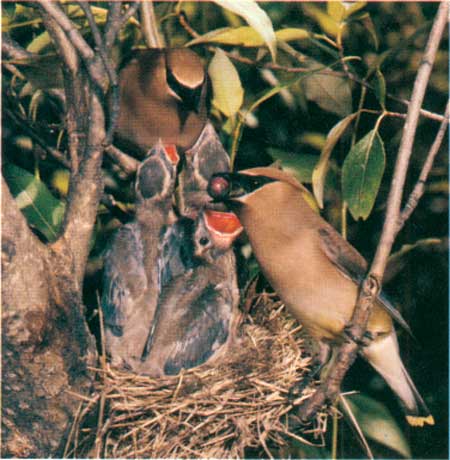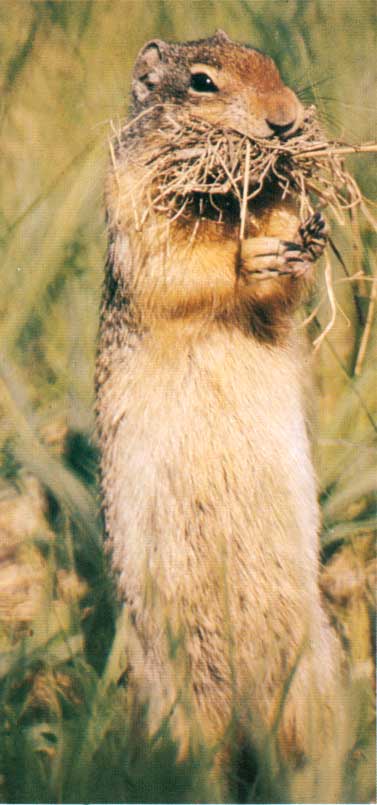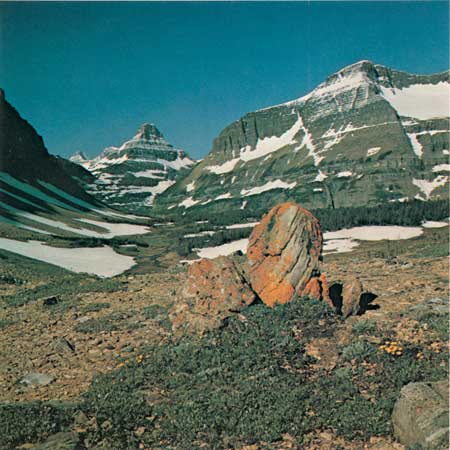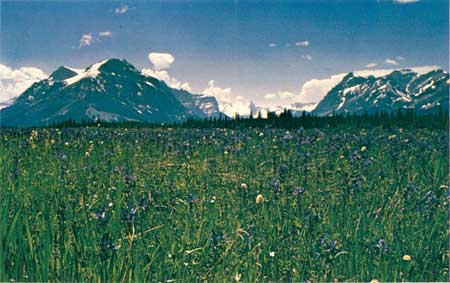
From their lowland wintering grounds, wapiti move up to
higher elevations in spring. Summer range in the park is abundant, but
winter range is limited; as a result, wapiti have a tendency to increase
their populations beyond the carrying capacity of available winter
range. In a severe winter many starve. But in a balanced ecosystem such
loss is not waste, for the carrion helps sustain scavengers: it is an
important initial food source for bears emerging from hibernation.
|

Cedar waxwings nest in moist areas of low valleys where
fruits and berries are abundant. Although they also subsist on insects
(which they can capture on the wing), their weakness for fruit is so
pronounced that the birds will sometimes gorge themselves until rendered
incapable of flight.
|

The Columbian ground squirrel is found at all park
elevations, from prairie to alpine meadow. Hibernation occupies almost
three-quarters of its five-year lifespan, unlike other park ground
squirrels, it lives in colonies. Although not as tightly structured as a
prairie dog town, the association is beneficial to all members in that
danger is readily detected.
|

The tundra community is encountered above Preston Park
on the Siyeh Pass trail. Mt. Reynolds, a classic example of a horn,
dominates the distant Logan Pass area.
|

Camas blooms in the prairie community along the Red
Eagle road. An important staple, camas bulbs were gathered as food by
Indians.
|
|










